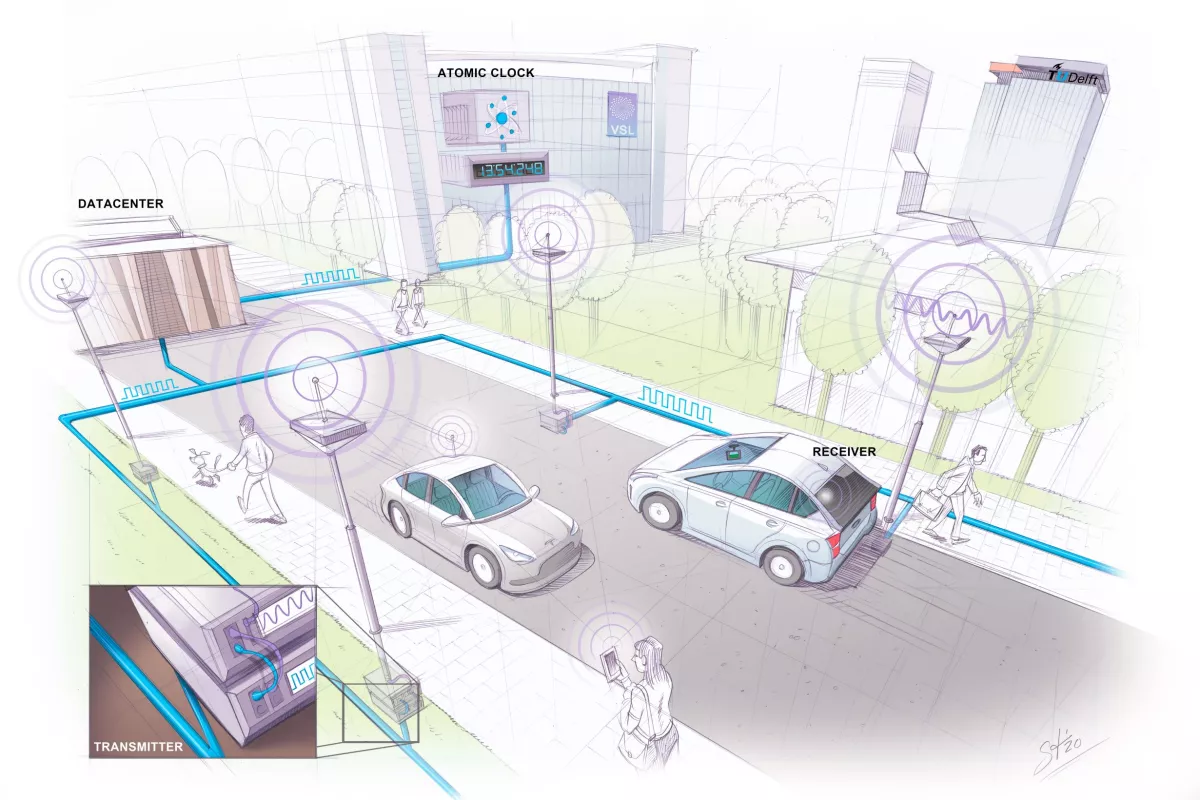GPS has been a crucial technology for decades, but it does have its limitations, particularly in urban areas where signals can get noisy. Now, engineers in the Netherlands have developed “SuperGPS” – a hybrid positioning system that combines wireless and optical connections to pinpoint locations within centimeters.
GPS satellites each carry an atomic clock that keeps extremely precise time, which is synchronized with clocks on the ground and on other satellites. A receiver device communicates with several satellites at once and calculates its own position in 3D space based on theirs, with a precision that can potentially be as small as a few centimeters.
But that’s under ideal conditions, and of course that’s not how the real world usually works. Buildings and other obstructions between the receiver and the satellites can disrupt the signals and widen the window of error to several meters. As location data becomes more critical for future technology like autonomous vehicles, finding ways to improve precision is increasingly important.
And that’s where SuperGPS comes in. Researchers from Delft University of Technology, Vrije Universiteit Amsterdam and VSL have developed an alternative system that functions on a similar principle as satellite-based GPS, but takes place entirely on the ground, tapping into existing telecommunications networks.
The “satellites” in this case are wireless radio transmitters that dot an urban area. Rather than each having their own atomic clock to keep time, they’re all linked to a single atomic clock via fiber optic cables, which keeps them in sync. Then it works much the same way as conventional GPS, with receiver devices triangulating their position by communicating with several of the radio nodes and calculating the time it takes for signals to bounce between each.

The team says that SuperGPS avoids the problem of buildings reflecting radio signals by using a large “virtual” bandwidth made up of several smaller bandwidth sections. This produces signals similar to those used by mobile phones, while allowing them to ignore interference from buildings and other objects. In tests of a prototype of the hybrid optical-wireless system, the team says SuperGPS was able to track devices to within a few tens of centimeters in a busy environment.
This kind of system wouldn’t replace GPS, but could work with it for more precise tracking in urban areas, or provide a backup system in case of an outage. Currently, precise tracking is achieved in urban areas using Wi-Fi.
The research was published in the journal Nature.
Source: Delft University of Technology





